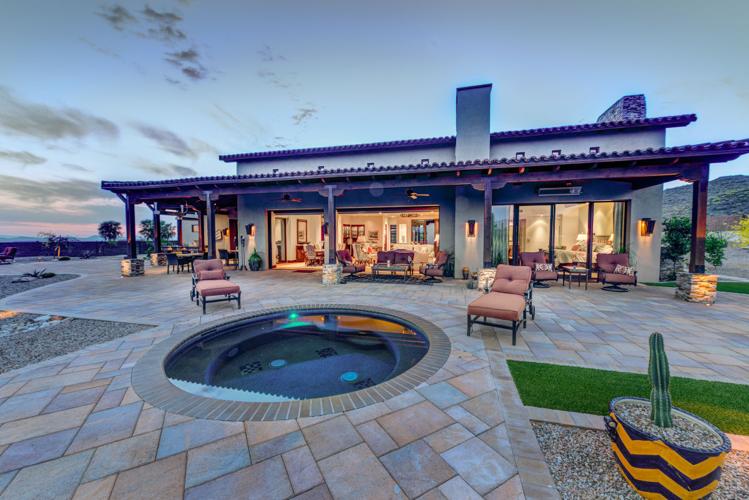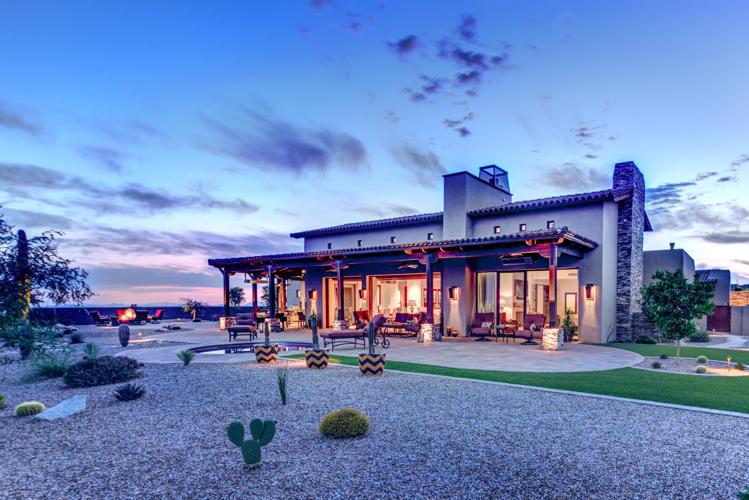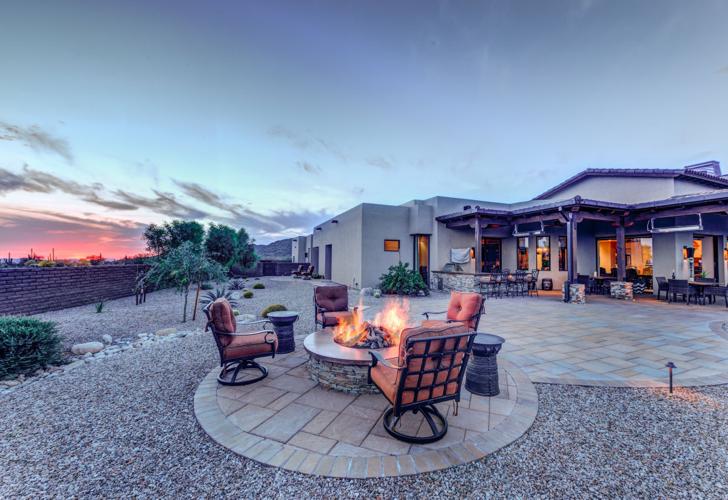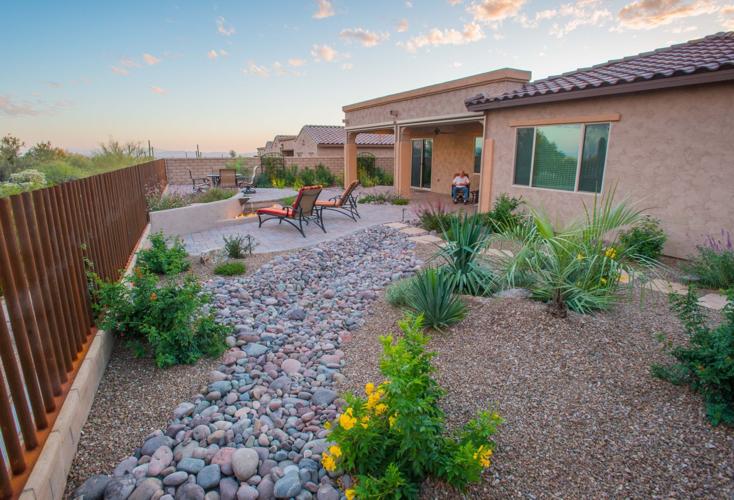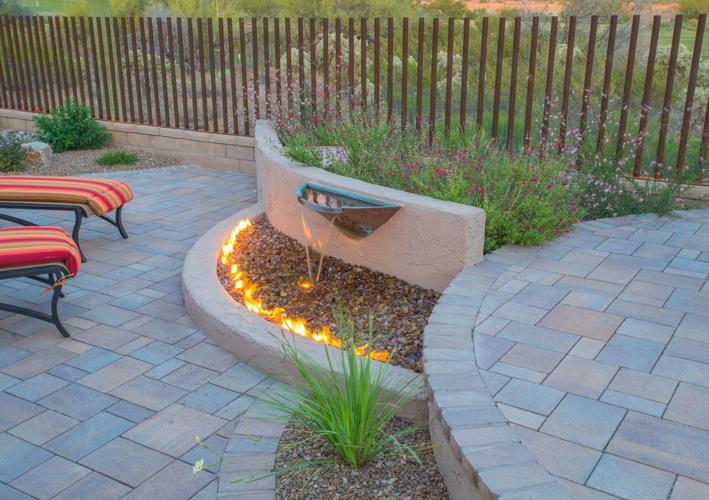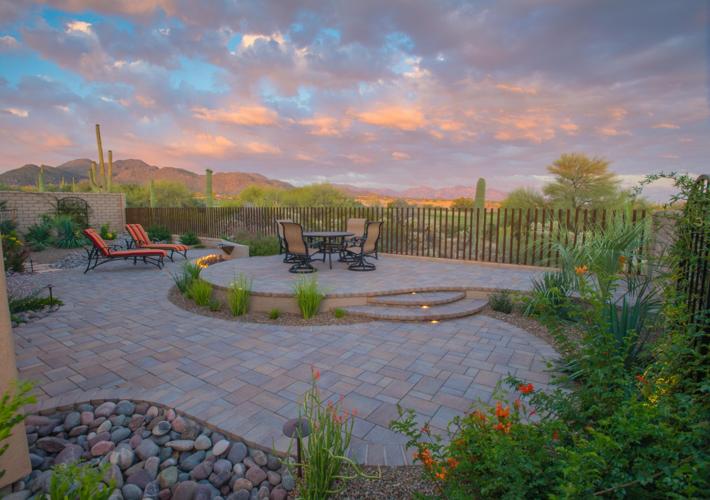Even though you may not be able to spend tons of money on a landscape design, you can implement bits and pieces to enhance your own space.
Two landscape designers offer some of those tricks. The realization of their designs won awards of distinction in 2015 for single-family residential installation from the Arizona Landscape Contractors’ Association.
Solana Outdoor Living LLC won its award in the $250,001-$350,000 category for a sprawling landscape in Dove Mountain. It was the only 2015 award given in that category.
Another Dove Mountain installation snagged an award for Santa Rita Landscaping Inc. in the $25,001-$50,000 category.
DEFINING SPACES
Allen Denomy, principal designer at Solana Outdoor Living, had the overwhelming task of designing the landscape around a spacious three-bedroom home and detached guest casita.
“It gets pretty tricky with such an extensive lot,” Denomy says. “You need a good balance between hardscape, landscape and softscape.”
Specifically dealing with the backyard, Denomy created separate dining, recreation and gathering spaces, then defined them by simply having the pavers turned in an opposite direction to the main area.
“It creates a separation of space,” he says. “I didn’t want it to feel like a sea of pavers.”
Here are some other features of the landscape.
Spool. No, not a bobbin or a reel. It’s a combination spa and pool. Four feet deep, it’s big enough for the grandkids to play in, and has seating and jets for relaxing.
Passive water harvesting. To avoid rain dripping off the roof into the grill and dining area, gutters collect the water and run it through downspouts beyond the roof line.
From there, the water runs down an imperceptible slope into basins and swales that guide the water to plants. The basins are masked by large rocks used as riprap.
Rock mulch. Rock mulch gives a finished look to the landscape and requires little maintenance, says Denomy.
Keep weed seeds from sprouting by laying down rock two inches thick. That will block the sunlight that the seeds need to grow, he says.
Rock mulch can heat up in high temperatures, making the surrounding air warmer. However, plants will reduce the effect, he says.
“Shade really helps a lot,” he says. For the property, he added mesquite, palo verde, ironwood and fruitless Wilson olive trees to the landscape. They all have shade-producing canopies.
SOFTENING HARDSCAPES
Rich Doering, senior design consultant at Santa Rita Landscaping, had a dual task.
He needed to maintain the spectacular views of the Tortolita Mountains and Sonoran Desert while hiding the views of equipment and angular features.
So he turned to plants.
That solution was particularly crucial to hide a storage vault for the propane gas tank that feeds the fire feature. Doering designed the vault so that he could avoid having a ground-level structure that would block the view.
The combination fire feature and fountain is backed by a planter where the vault is located. Salvia, sage and guara grow out to cover the planter and the cap to the vault.
“These are fairly simple plants,” says Doering, which additionally provide a nice visual transition to the desert beyond the fence.
Plants also hide the hard lines of the raised platform that acts as a dining area and provides an even better vista.
“Anytime you raise an area of a small yard, planting softens those up,” he says.
The planter at the rim of the dining area holds fortnight lily and rain lily. Both grow to the height of the platform without overtaking the space.
Here are some other features Doering points out.
Combining features. A few more words about the fire feature and fountain: The homeowners wanted this combined feature and Doering says it’s a good option for a small budget or space.
“You already have the building structure for the water,” he says. “Adding the fire feature is just adding the burners.”
Plenty of warmth comes from the fire, its flames making the glass rocks shimmer. The sound of gently falling water wafts from the fountain.
Harvesting rainwater. Doering did more hiding when devising a system to collect and distribute rainwater without using a view-busting cistern.
Water falls off the roof through the scuppers onto the planters.
Underneath the planters are pipes that collect and guide excess water under the pavers and into the lower landscaped areas.
Basins covered by riprap fill, allowing the water to soak into the soil to irrigate the plants there. Any overflow runs out of the yard into the desert.
“Gravity works in your favor in so many ways and that’s all you need,” says Doering.
Low plants. Because the backyard faces east, there was no need to plant a tree for shade. That eliminates the potential for blocking the view.


